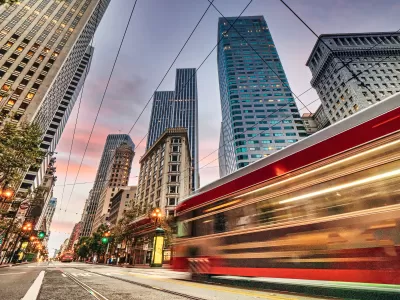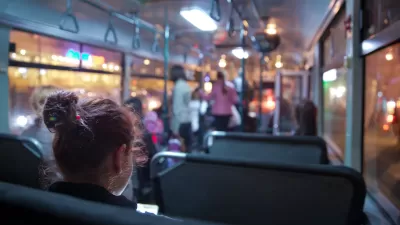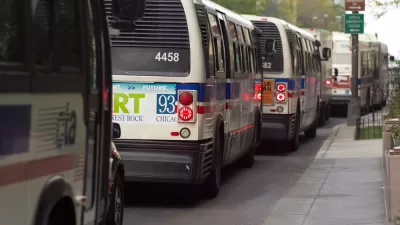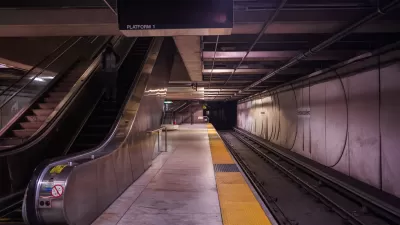With many of California’s low-income workers dependent on public transit to get to work and run daily errands, the San Francisco Chronicle Editorial Board calls on the state’s governor to support faltering transit systems.

Will California Governor Gavin Newsom let the state’s transit systems fail? The San Francisco Chronicle’s editorial board argues that he shouldn’t. “Without money to keep public transit from going kaput, and with fewer grants available to buy electric vehicles, how will lower-income Californians get to work or the doctor’s office?”
Without state intervention, in the Bay Area alone, “The San Francisco Municipal Transportation Agency estimates that it will have to slash one line per month for 20 months starting this summer if state funds don’t come in. BART, meanwhile, is bracing for a worst-case financial scenario that could result in closing service on weekends, shuttering two of its five lines and nine of its 50 stations, and running trains as infrequently as once per hour.”
Meanwhile, the governor’s proposed budget steadfastly supports transit funding cuts. The editorial board argues that “Many other investments will be for naught if California’s public transit systems enter financial ruin.”
The board points out that transit agencies are working to develop better accountability systems as they seek additional funding. “On Thursday, the California Transit Association released a proposed accountability framework that would require agencies receiving state funds to submit detailed plans to recover ridership and address operating deficits. Agencies would also have to submit progress reports every two years outlining how they spent the money.”
FULL STORY: Gavin Newsom can’t just let California public transit collapse

Study: Maui’s Plan to Convert Vacation Rentals to Long-Term Housing Could Cause Nearly $1 Billion Economic Loss
The plan would reduce visitor accommodation by 25,% resulting in 1,900 jobs lost.

North Texas Transit Leaders Tout Benefits of TOD for Growing Region
At a summit focused on transit-oriented development, policymakers discussed how North Texas’ expanded light rail system can serve as a tool for economic growth.

Why Should We Subsidize Public Transportation?
Many public transit agencies face financial stress due to rising costs, declining fare revenue, and declining subsidies. Transit advocates must provide a strong business case for increasing public transit funding.

How to Make US Trains Faster
Changes to boarding platforms and a switch to electric trains could improve U.S. passenger rail service without the added cost of high-speed rail.

Columbia’s Revitalized ‘Loop’ Is a Hub for Local Entrepreneurs
A focus on small businesses is helping a commercial corridor in Columbia, Missouri thrive.

Invasive Insect Threatens Minnesota’s Ash Forests
The Emerald Ash Borer is a rapidly spreading invasive pest threatening Minnesota’s ash trees, and homeowners are encouraged to plant diverse replacement species, avoid moving ash firewood, and monitor for signs of infestation.
Urban Design for Planners 1: Software Tools
This six-course series explores essential urban design concepts using open source software and equips planners with the tools they need to participate fully in the urban design process.
Planning for Universal Design
Learn the tools for implementing Universal Design in planning regulations.
Ascent Environmental
Borough of Carlisle
Institute for Housing and Urban Development Studies (IHS)
City of Grandview
Harvard GSD Executive Education
Toledo-Lucas County Plan Commissions
Salt Lake City
NYU Wagner Graduate School of Public Service





























